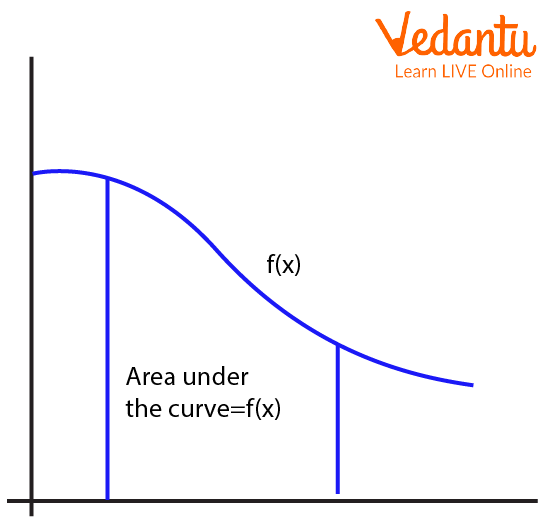




A Brief Introduction to the Second Fundamental Theorem of Calculus
The Second Fundamental Theorem of Calculus is used to show the relationship that differentiation and integration operations in Mathematics are inverse of each other. The fundamental theorem of calculus has a rich history. However, the most important names associated with the theorem are Isaac Newton and Gottfried Leibniz. The notations used today are given by Gottfried Leibniz. We will discuss about the Second Fundamental Theorem of Calculus proof and Second Fundamental Theorem Of Calculus examples for better understanding and clarity of the topic.
History of Gottfried Leibniz

Gottfried Leibnitz
Name: Gottfried Leibniz
Born: 1 July 1646
Died: 14 November 1716
Field: Mathematics
Nationality: German
Statement of Second Fundamental Theorem of Calculus
According to the Second Fundamental Theorem of Calculus, the differentiation of an antiderivative function results in original functions.
Mathematically, consider a function
Second Fundamental Theorem of Calculus Proof

Proof of the Second Fundamental Theorem
The proof includes three steps.
Integrate the given function
Apply the upper and lower bounds of integration.
Differentiate the obtained expression to finally get the initial function back.
The value of integration of
Now, apply the upper bound limit of
We will get,
The derivation of
Hence the proof of the Second Fundamental Theorem of Calculus.
Limitations of the Second Fundamental Theorem of Calculus
The function being continuous is a vital condition. The theorem is not applicable in the case of non-continuous functions.
The second Fundamental Theorem of Calculus doesn't tell anything about antiderivatives as infinite antiderivatives are corresponding to different arbitrary constants.
Applications of the Second Fundamental Theorem of Calculus
The second Fundamental Theorem of Calculus is used to relate the fundamental elements of calculus, i.e., integration and differentiation.
It is used for some complex differentiation which will not be possible without using this theorem.
Second Fundamental Theorem of Calculus Examples
1. Find the differentiation of the anti-derivative of the function
Ans: The given function is
Let us find the antiderivative of this function across the limits from
Now, differentiating the obtained expression.
Using the second fundamental theorem of calculus,
Therefore, the differentiation of the anti-derivative of the function
2. Prove that the differentiation of the anti-derivative of the function cosx will give the same function.
Ans: The given function is
The integration of
Now, differentiating
So,
3. Find the value of the integral
Ans: Using FTC 2,
So, first, we will evaluate the indefinite integral
BY FTC 2,
Important Formulas to Remember
For a continuous function
Important Points to Remember
Integration and differentiation are related to each other with the help of the Second Fundamental Theorem of Calculus.
There are a total of three fundamental theorems of calculus.
Conclusion
In the article, we have discussed the detailed proof of the Second Fundamental Theorem of Calculus and its applications. The theorem is quite fundamental in its sense and hence named so. The novel thing about the theorem is the way it connects two different fundamental tools with a relation. This theorem is the backbone of calculus.
FAQs on Second Fundamental Theorem of Calculus
1. What is the difference between the First Fundamental Theorem of Calculus and the Second Fundamental Theorem of Calculus?
The first fundamental theorem of calculus is used to define the antiderivative, i.e., integration of a real-valued continuous function defined on a closed interval with lower and upper bounds. On the other hand, the Second Fundamental Theorem of Calculus is used to define a relationship between the antiderivative and derivative. Despite differences, both are applicable in the case of a continuous real-valued function. The first fundamental theorem of calculus is used to find the value of integration of a function with upper and lower bounds while the Second fundamental theorem states that the application of the derivative operator on the antiderivative of a function gives back the initial function.
2. What makes the Second Fundamental Theorem of Calculus so fundamental?
The Second Fundamental Theorem of Calculus tells the relationship between integration and differentiation, which are the fundamental tools of Calculus. Without this theorem, these fundamental tools would always be treated as separate topics, and Calculus as a field might not exist because calculus is purely based on integration and differentiation and their property of being inverse of each other. A more interesting fact related to Fundamental Theorems is that the theorems were proven even earlier than when Calculus was invented.
3. Is there any relation between Stoke’s Theorem and the Second Fundamental Theorem of Calculus?
Yes, Stoke’s Theorem shares a beautiful relation with the Second Fundamental Theorem of Calculus. Stoke’s Theorem is considered a generalised form of the Second Fundamental Theorem of Algebra in higher dimensions. The Second Fundamental Theorem is only valid in one-dimensional functions. Both the theorems are based on the same principles. Stoke’s Theorem is derived using the Second Fundamental Theorem. The general form of the Second Fundamental theorem in the 2-dimensional plane is termed Green’s Theorem whereas in the 3-dimensional plane it is termed Stoke’s Theorem.
























